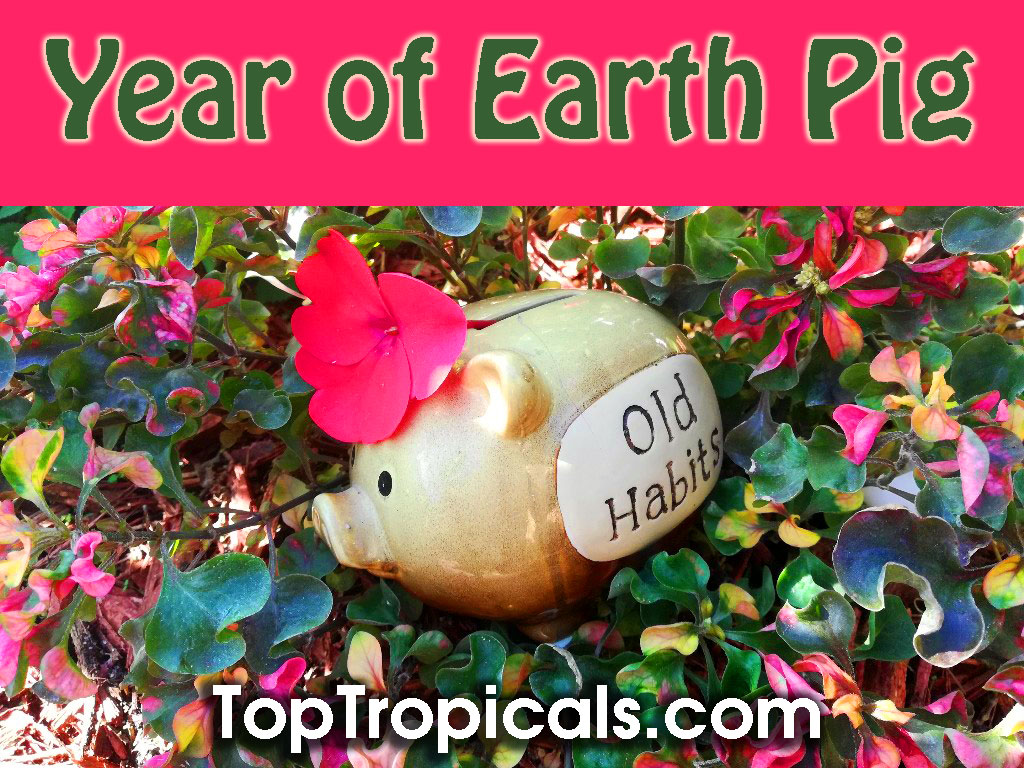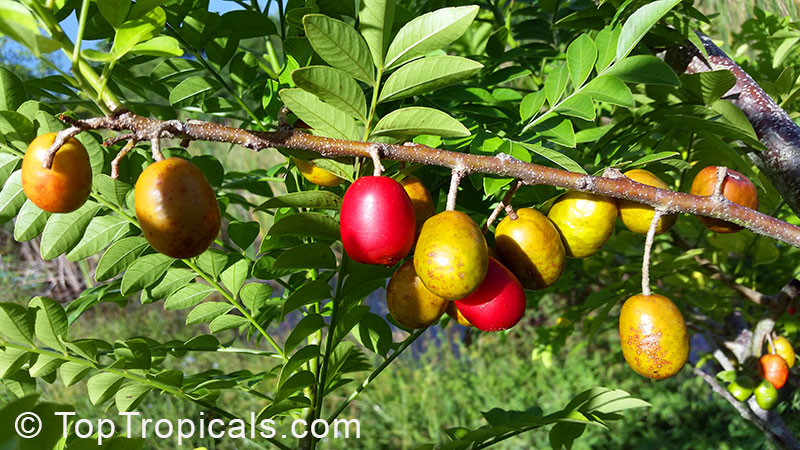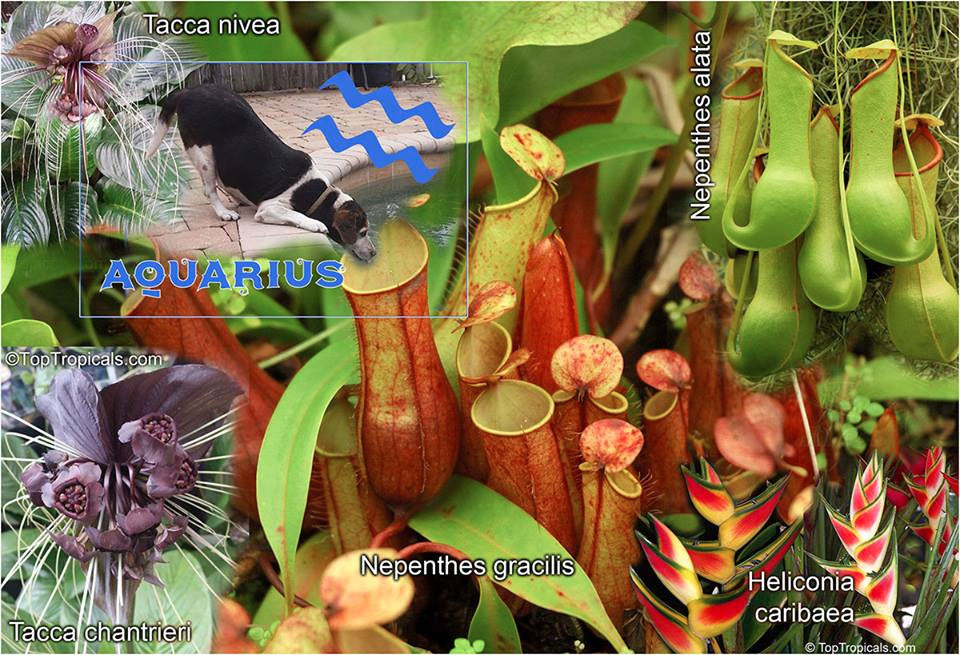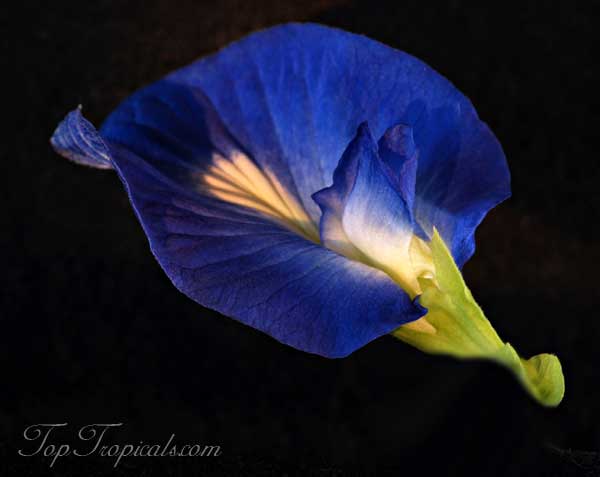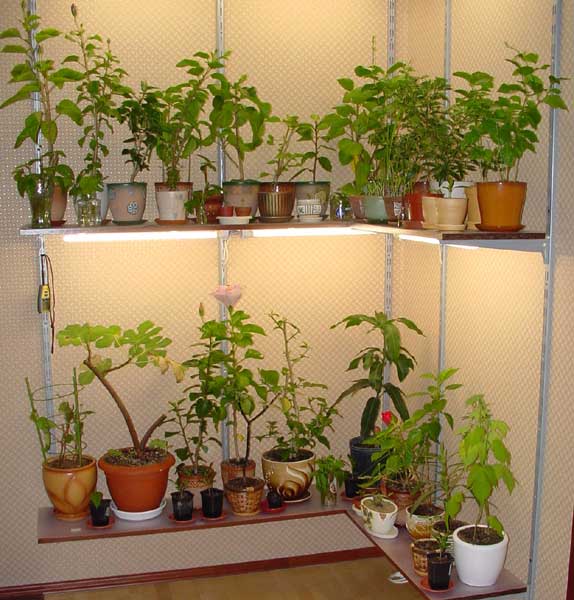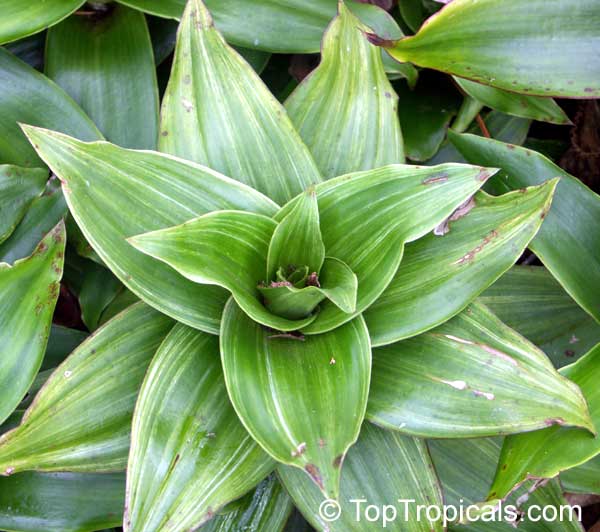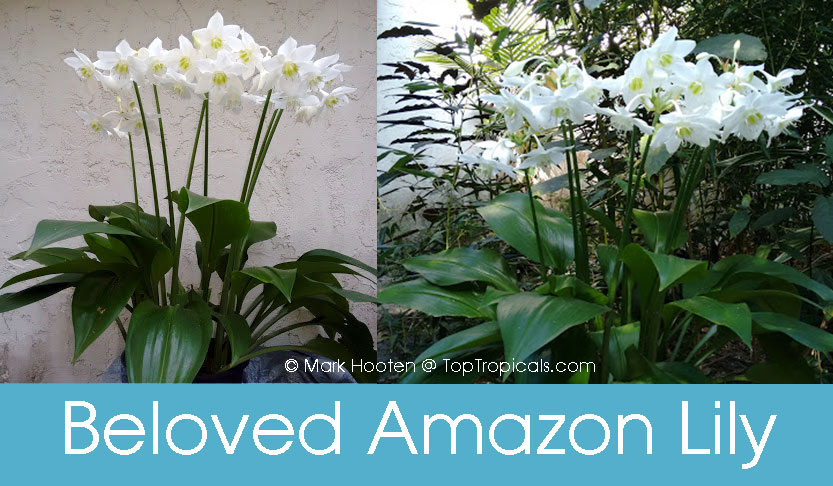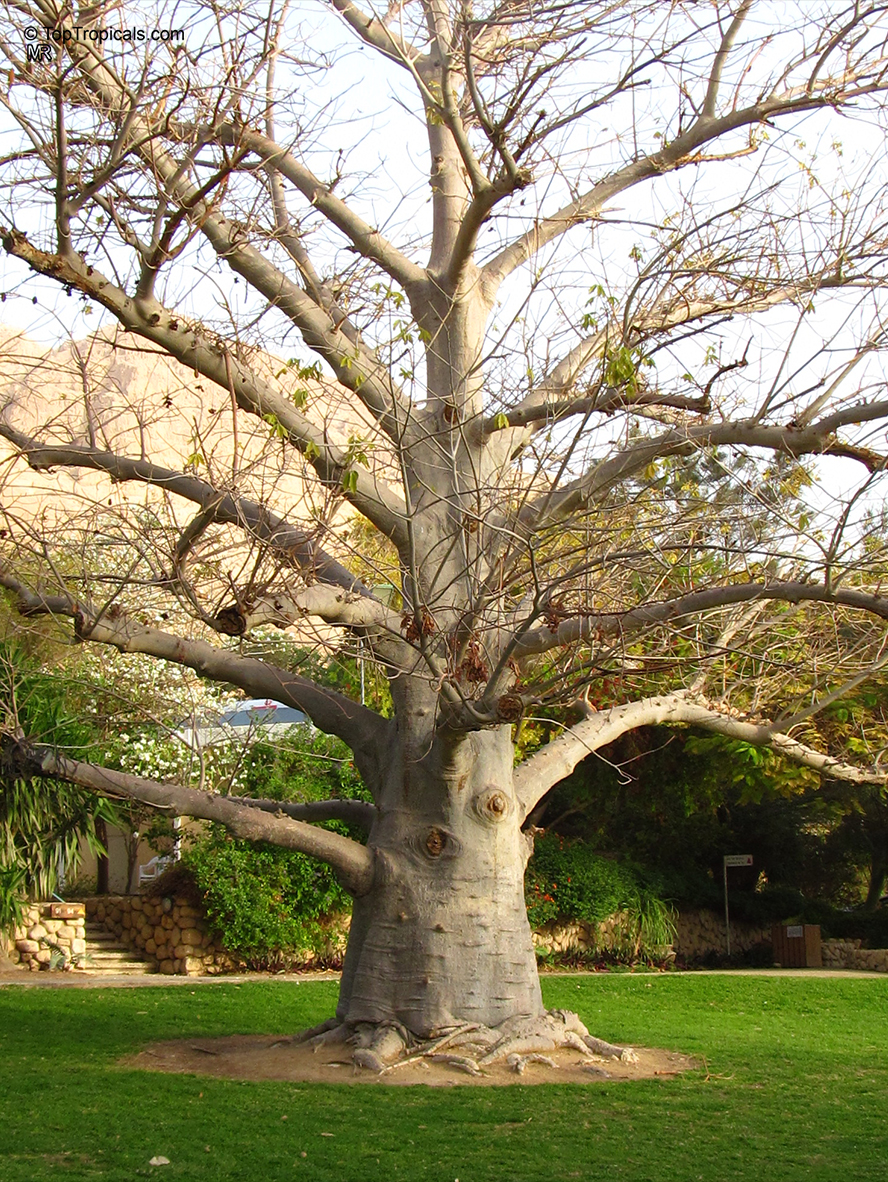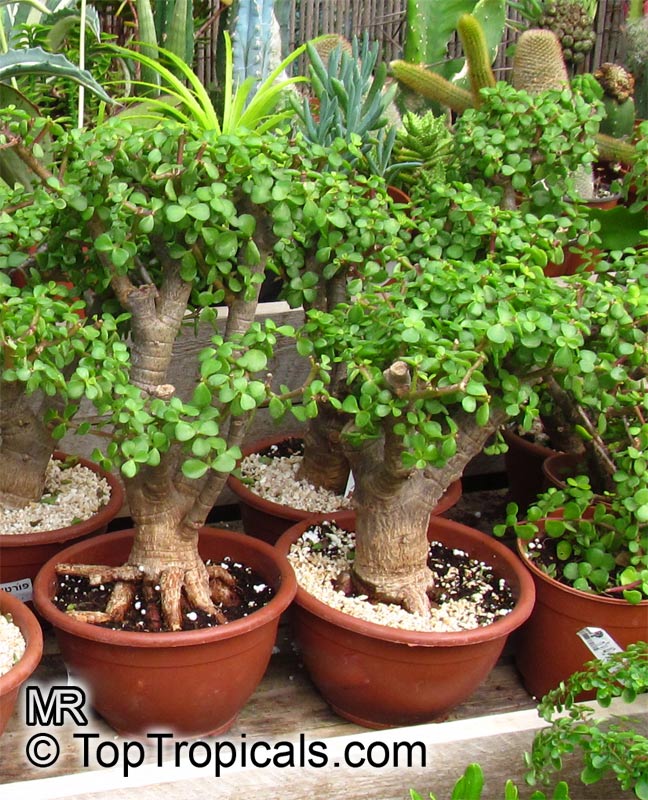Garden Blog - Top Tropicals
Date:
Happy 2019 - Year of Earth Pig!
2019 is the Year of the Earth Pig, according to the Chinese Calendar,
and it just started February 5!
In 2019, the corresponding element is once again Earth, as it was in
2018. So what happens when you mix the Pig with the Earth Element?
An Earth Pig year combines a realistic but happy-go-lucky sociable pig combined with the steady and sensible characteristics of Earth, it combines the relaxed attitude of the animal with a very "down-to-earth" realistic climate, don't try to push too hard, this is a time to take things in stride. For the Pig, it was definitely all about the journey and not the destination! Because of the Pig's willingness to always help others out, it tends to bring good things to everyone around him. The Pig in Chinese culture represents wealth and prosperity.
2019 is a good year for giving your garden a fresh start, and especially for establishing new fruit trees that will bring you the enjoyment of deliciousness and... always healthy good food on the table!
2019 Super Fruit
This year, to keep the Pig happy and helpful, every tropical gardener should get a Hog Plum - a fast-growing and easy to care rare fruit tree with delicious aromatic fruit. It will fruit for you this year!
For lucky Zodiac plants, see Plant Horoscope Page.
Date:
Aquarius Plant Horoscope

Aquarius - 1/22 -
2/18.
Aquarius is an AIR sign ruled by odd-ball Uranus.
The water-bearer's plants will often grow in unusual places and may vary in
appearance. They often have purple or blue flowers, or may have unusual
colors.
The most healing and beneficial plants for Aquarius are the ones that help
circulation, relax the nervous system, or promote inspiration. When Uranus
was discovered, it replaced Mercury as ruler of Aquarius. Physiologically,
Uranus rules the bioelectrical impulses that power the body's nervous system
(nervous tension and nervous exhaustion brought on by powerful changes in the
environment are related to both Mercury and Uranus). Physically, Aquarius
rules the lower legs, the calves, and the ankles, and the electrical impulses
that travel through the body's nervous system. The nervous system itself is
ruled by Mercury, and Uranus is said to be a "higher octave" of Mercury. Since
Uranus was discovered after the correspondences with plants had been
established, the herbs used in Aquarius are Mercury herbs. Always difficult to
pinpoint, quirky Aquarius appreciates the unusual and complex flavor of star anise. Use this star-shaped spice when you wish to bring happy
surprises into your life.
Aquarius Zodiac lucky plants:
Anise, Orchid, Golden rain - Koelreuteria paniculata, Bird of Paradise, Heliconia, Petrea, Mandevilla, Jasminum, Kiwi, Persimmon, Loquat, Olive, Alocasia, Colocasia, Citrus, Apple, Peppers, Gingers, Carambola, herbs spicy with an unusual flavor, White Pothos, Ivy, Shami - Prosopis cineraria, Neem, Medinilla, Sheesham Tree, Catnip, Passion fruit, Valerian, Aloe, Myrrh, Kava-kava, Cinnamon, Clove, Eucalyptus, Coffee, Cola nut, Nepenthes, Vanilla Orchid, Strongylodon - Jade vine, Tacca - Bat Lily, Eranthemums, Agapanthus, Orchid trees, Bolusanthus, Chamaedorea metallica, Clerodendrum ugandense, Clitoria, Duranta, Guaiacum, Jacaranda, Lavanda.
For other signs information, see full Plant Horoscope.
Date:
Featured plant. Clitoria ternatea - Blue Butterfly Pea
Clitoria ternatea - Blue Butterfly Pea
Butterfly pea, Asian pigeonwings. Perfect vine! Blooms year-round, fast growing, easy, not invasive, controllable, not messy, curious bright blue flower - Clitoris-like flower shape, hence the name of the plant. Fast-growing climber with fine foliage, pinnate leaves. Besides being a great ornamental, this plant has some practical and medicinal value. The seed pods are edible, as well as the flowers. The flowers are used for blue food dye for rice and teas. It is also a nitrogen fixer and helps prevent E-coli.
Date:
How to set up indoor lighting for tropical plants
Q: My tropical plant collection goes indoors for winter. I have over 100 plants now and all windowsill space is taken. I am planning to build some shelves so I can also start some rare seeds indoors. Can you advise me on the choice of the grow lights so I can do it right?
A: Indoor plants are very unlucky: they have to grow in "caves," and everybody knows that plants don't grow in the caves. The luckiest plants win sunny windowsills, but even there they dwell rather like in underbrush under tall trees, where the sun illuminate them only early in the morning or in the evening, and its light is diffused by foliage. Usually, domestic plants are in desperate lack of illumination not only in winter but also in summer. No light - no growth, no flowering. So, plants need extra light to compensate for the lack of illumination in the "room-cave" conditions. And here is some science behind it...
Check out our selection of tropical plants tolerant to low light conditions.
Date:
Callisia fragrans variegata - Variegated Golden Tendril
This is an extremely rare variety of the Russian Holistic Medicinal Plant - Golden Tendril. The plant has wide medicinal use in Europe and Russia, literally every household, millions of Russians use this plant as a home remedy...
Date:
BELOVED AMAZON LILY
By Mark Hooten, the Garden Doc
Question: I'm hoping you can recommend a lush looking houseplant which will be happy in an otherwise bright "sun room" which receives only a little actual sunlight. Something that looks tropical and exotic, and maybe even makes flowers which are fragrant?
Answer: Perfect timing because at this moment, my much beloved Amazon Lily (Eucharis grandiflora) is currently flowering spectacularly! I've had this particular plant for nearly twenty years, and it's one of my absolute favorites.
Check out our large selection of rare beauties that are great as houseplants.
Date:
Achras (manilkara) zapota - Sapodilla Silas Woods
The Silas Woods is an outstanding variety of Sapodilla.
The tree has dwarf growth habit (under 20 ft in the ground) and adapts
well to a container.
This variety is highly productive.
Trees are producing year round, the branches often require support as they get very heavily loaded with fruits. Perfect fruit tree for small yards and container culture!
Date:
Garden-burned Calories in 30 minutes
This is interesting! According to Harvard Medical School research, gardening activities are compared with some serious workout! Calories burned in 30 minutes by:
Walking 178
Bowling 133
Gymnastics 178
Dancing 244
Planting seedlings, shrubs 178
Planting trees 200
Gardening-weeding 205
Digging, spading dirt 222
So what are you waiting for? Start losing weight now by planting a tree and dancing!
Date:
Climate change is wiping out the Baobab, Africa's tree of life...
According to The Guardian News and Media, Africa's "tree of life" may not have much
longer left... These highly important species are threatened with
extinction, due to climate change and human development. Some species may not survive
the next century. While plants have generally adapted to extended droughts,
climate change is different, and with the Anthropocene, we are already
witnessing the loss of these impressive trees. Africa's largest, oldest inhabitants,
that have played silent witness to numerous generations, are already paying a
heavy price for the environmental crimes of foreign lands.
Baobab forms an integral part in people's livelihoods. In West Africa,
it is also called the "palaver tree" because of its social functions: when
there is a problem in the community, meeting under the Baobab tree with the
chief or the tribesmen would be synonymous with trying to find a solution to
that problem; it reinforces trust and respect among members of the community.
Its extinction would not simply be an environmental tragedy...
Every tropical gardener should have a Baobab to help to save this amazing species for the planet!
Date:
Fascinating Spekboom (Portulacaria afra, or Baby Jade)

By Mark Hooten, the Garden Doc
...I love this plant! I first grew it in the 1960s when I was just a
kid. I found it growing as a fantastic four-foot tall houseplant in a big sunny
window in a schoolmate's home and was happily given a cutting. When I
inquired about this most unusual plant, my friend's mother explained that she had
brought a piece of it with her when she came from South Africa many years
earlier. She told me that in Africa, it is a favorite food for both Elephants and
Rhinoceros and that it was grown all over her families farm for feeding both
animals and people. Being a little kid in Illinois, I found this especially
fascinating...
Continue reading...
